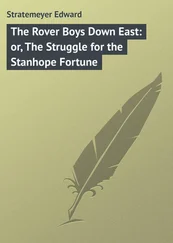Чарльз Дарвин - The Origin of Species by Means of Natural Selection Or, the Preservation of Favoured Races in the Struggle for Life
Здесь есть возможность читать онлайн «Чарльз Дарвин - The Origin of Species by Means of Natural Selection Or, the Preservation of Favoured Races in the Struggle for Life» весь текст электронной книги совершенно бесплатно (целиком полную версию без сокращений). В некоторых случаях можно слушать аудио, скачать через торрент в формате fb2 и присутствует краткое содержание. Год выпуска: 1999, Жанр: Биология, на английском языке. Описание произведения, (предисловие) а так же отзывы посетителей доступны на портале библиотеки ЛибКат.
- Название:The Origin of Species by Means of Natural Selection Or, the Preservation of Favoured Races in the Struggle for Life
- Автор:
- Жанр:
- Год:1999
- ISBN:нет данных
- Рейтинг книги:3 / 5. Голосов: 1
-
Избранное:Добавить в избранное
- Отзывы:
-
Ваша оценка:
- 60
- 1
- 2
- 3
- 4
- 5
The Origin of Species by Means of Natural Selection Or, the Preservation of Favoured Races in the Struggle for Life: краткое содержание, описание и аннотация
Предлагаем к чтению аннотацию, описание, краткое содержание или предисловие (зависит от того, что написал сам автор книги «The Origin of Species by Means of Natural Selection Or, the Preservation of Favoured Races in the Struggle for Life»). Если вы не нашли необходимую информацию о книге — напишите в комментариях, мы постараемся отыскать её.
The Origin of Species by Means of Natural Selection Or, the Preservation of Favoured Races in the Struggle for Life — читать онлайн бесплатно полную книгу (весь текст) целиком
Ниже представлен текст книги, разбитый по страницам. Система сохранения места последней прочитанной страницы, позволяет с удобством читать онлайн бесплатно книгу «The Origin of Species by Means of Natural Selection Or, the Preservation of Favoured Races in the Struggle for Life», без необходимости каждый раз заново искать на чём Вы остановились. Поставьте закладку, и сможете в любой момент перейти на страницу, на которой закончили чтение.
Интервал:
Закладка:
How, then, can we explain these several facts in embryology—namely, the very general, though not universal, difference in structure between the embryo and the adult; the various parts in the same individual embryo, which ultimately become very unlike, and serve for diverse purposes, being at an early period of growth alike; the common, but not invariable, resemblance between the embryos or larvae of the most distinct species in the same class; the embryo often retaining, while within the egg or womb, structures which are of no service to it, either at that or at a later period of life; on the other hand, larvae which have to provide for their own wants, being perfectly adapted to the surrounding conditions; and lastly, the fact of certain larvae standing higher in the scale of organisation than the mature animal into which they are developed? I believe that all these facts can be explained as follows.
It is commonly assumed, perhaps from monstrosities affecting the embryo at a very early period, that slight variations or individual differences necessarily appear at an equally early period. We have little evidence on this head, but what we have certainly points the other way; for it is notorious that breeders of cattle, horses and various fancy animals, cannot positively tell, until some time after birth, what will be the merits and demerits of their young animals. We see this plainly in our own children; we cannot tell whether a child will be tall or short, or what its precise features will be. The question is not, at what period of life any variation may have been caused, but at what period the effects are displayed. The cause may have acted, and I believe often has acted, on one or both parents before the act of generation. It deserves notice that it is of no importance to a very young animal, as long as it is nourished and protected by its parent, whether most of its characters are acquired a little earlier or later in life. It would not signify, for instance, to a bird which obtained its food by having a much-curved beak whether or not while young it possessed a beak of this shape, as long as it was fed by its parents.
I have stated in the first chapter, that at whatever age any variation first appears in the parent, it tends to reappear at a corresponding age in the offspring. Certain variations can only appear at corresponding ages; for instance, peculiarities in the caterpillar, cocoon, or imago states of the silk-moth; or, again, in the full-grown horns of cattle. But variations which, for all that we can see might have appeared either earlier or later in life, likewise tend to reappear at a corresponding age in the offspring and parent. I am far from meaning that this is invariably the case, and I could give several exceptional cases of variations (taking the word in the largest sense) which have supervened at an earlier age in the child than in the parent.
These two principles, namely, that slight variations generally appear at a not very early period of life, and are inherited at a corresponding not early period, explain, as I believe, all the above specified leading facts in embryology. But first let us look to a few analogous cases in our domestic varieties. Some authors who have written on Dogs maintain that the greyhound and bull-dog, though so different, are really closely allied varieties, descended from the same wild stock, hence I was curious to see how far their puppies differed from each other. I was told by breeders that they differed just as much as their parents, and this, judging by the eye, seemed almost to be the case; but on actually measuring the old dogs and their six-days-old puppies, I found that the puppies had not acquired nearly their full amount of proportional difference. So, again, I was told that the foals of cart and race-horses—breeds which have been almost wholly formed by selection under domestication—differed as much as the full-grown animals; but having had careful measurements made of the dams and of three-days-old colts of race and heavy cart-horses, I find that this is by no means the case.
As we have conclusive evidence that the breeds of the Pigeon are descended from a single wild species, I compared the young pigeons within twelve hours after being hatched. I carefully measured the proportions (but will not here give the details) of the beak, width of mouth, length of nostril and of eyelid, size of feet and length of leg, in the wild parent species, in pouters, fantails, runts, barbs, dragons, carriers, and tumblers. Now, some of these birds, when mature, differ in so extraordinary a manner in the length and form of beak, and in other characters, that they would certainly have been ranked as distinct genera if found in a state of nature. But when the nestling birds of these several breeds were placed in a row, though most of them could just be distinguished, the proportional differences in the above specified points were incomparably less than in the full-grown birds. Some characteristic points of difference—for instance, that of the width of mouth—could hardly be detected in the young. But there was one remarkable exception to this rule, for the young of the short-faced tumbler differed from the young of the wild rock-pigeon, and of the other breeds, in almost exactly the same proportions as in the adult stage.
These facts are explained by the above two principles. Fanciers select their dogs, horses, pigeons, etc., for breeding, when nearly grown up. They are indifferent whether the desired qualities are acquired earlier or later in life, if the full-grown animal possesses them. And the cases just given, more especially that of the pigeons, show that the characteristic differences which have been accumulated by man's selection, and which give value to his breeds, do not generally appear at a very early period of life, and are inherited at a corresponding not early period. But the case of the short-faced tumbler, which when twelve hours old possessed its proper characters, proves that this is not the universal rule; for here the characteristic differences must either have appeared at an earlier period than usual, or, if not so, the differences must have been inherited, not at a corresponding, but at an earlier age.
Now, let us apply these two principles to species in a state of nature. Let us take a group of birds, descended from some ancient form and modified through natural selection for different habits. Then, from the many slight successive variations having supervened in the several species at a not early age, and having been inherited at a corresponding age, the young will have been but little modified, and they will still resemble each other much more closely than do the adults, just as we have seen with the breeds of the pigeon. We may extend this view to widely distinct structures and to whole classes. The fore-limbs, for instance, which once served as legs to a remote progenitor, may have become, through a long course of modification, adapted in one descendant to act as hands, in another as paddles, in another as wings; but on the above two principles the fore-limbs will not have been much modified in the embryos of these several forms; although in each form the fore-limb will differ greatly in the adult state. Whatever influence long continued use or disuse may have had in modifying the limbs or other parts of any species, this will chiefly or solely have affected it when nearly mature, when it was compelled to use its full powers to gain its own living; and the effects thus produced will have been transmitted to the offspring at a corresponding nearly mature age. Thus the young will not be modified, or will be modified only in a slight degree, through the effects of the increased use or disuse of parts.
With some animals the successive variations may have supervened at a very early period of life, or the steps may have been inherited at an earlier age than that at which they first occurred. In either of these cases the young or embryo will closely resemble the mature parent-form, as we have seen with the short-faced tumbler. And this is the rule of development in certain whole groups, or in certain sub-groups alone, as with cuttle-fish, land-shells, fresh-water crustaceans, spiders, and some members of the great class of insects. With respect to the final cause of the young in such groups not passing through any metamorphosis, we can see that this would follow from the following contingencies: namely, from the young having to provide at a very early age for their own wants, and from their following the same habits of life with their parents; for in this case it would be indispensable for their existence that they should be modified in the same manner as their parents. Again, with respect to the singular fact that many terrestrial and fresh-water animals do not undergo any metamorphosis, while marine members of the same groups pass through various transformations, Fritz Muller has suggested that the process of slowly modifying and adapting an animal to live on the land or in fresh water, instead of in the sea, would be greatly simplified by its not passing through any larval stage; for it is not probable that places well adapted for both the larval and mature stages, under such new and greatly changed habits of life, would commonly be found unoccupied or ill-occupied by other organisms. In this case the gradual acquirement at an earlier and earlier age of the adult structure would be favoured by natural selection; and all traces of former metamorphoses would finally be lost.
Читать дальшеИнтервал:
Закладка:
Похожие книги на «The Origin of Species by Means of Natural Selection Or, the Preservation of Favoured Races in the Struggle for Life»
Представляем Вашему вниманию похожие книги на «The Origin of Species by Means of Natural Selection Or, the Preservation of Favoured Races in the Struggle for Life» списком для выбора. Мы отобрали схожую по названию и смыслу литературу в надежде предоставить читателям больше вариантов отыскать новые, интересные, ещё непрочитанные произведения.
Обсуждение, отзывы о книге «The Origin of Species by Means of Natural Selection Or, the Preservation of Favoured Races in the Struggle for Life» и просто собственные мнения читателей. Оставьте ваши комментарии, напишите, что Вы думаете о произведении, его смысле или главных героях. Укажите что конкретно понравилось, а что нет, и почему Вы так считаете.












